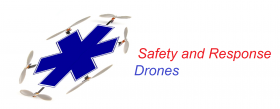“I visited the University of Torino in 2007 to speak with the team developing UAVs for the World Food Program.
Since then, I’ve bought and tested two small UAVs of my own so I can
use this new technology to capture aerial imagery during disasters; like
the footage below from the Philippines.
UAVs, or drones, have a very strong
military connotation for many of us. But so did space satellites before
Google Earth brought satellite imagery into our homes and changed our
perceptions of said technology. So it stands to reason that UAVs and
aerial imagery will follow suit. This explains why I’m a proponent of
the Drone Social Innovation Award, which
seeks to promote the use of civilian drone technology for the benefit
of humanity. I’m on the panel of judges for this award, which is why I
reached out to DanOffice IT, a Swiss-based company that deployed two drones in response to Typhoon Yolanda in the Philippines. The drones in question are Huginn X1′s, which have a flight time of 25 minutes with a range of 2 kilometers and maximum altitude of 150 meters.
“I recently spoke with one of the
Huginn pilots who was in Tacloban. He flew the drone to survey shelter
damage, identify blocked roads and search for bodies in the debris
(using thermal imaging cameras mounted on the drone for the latter). The
imagery captured also helped to identify appropriate locations to set
up camp. When I asked the pilot whether he was surprised by anything
during the operation, he noted that road-clearance support was not a
use-case he had expected. I’ll be meeting with him in Switzerland in the
next few weeks to test-fly a Huginn and explore possible partnerships.
“I’d like to see closer collaboration between the Digital Humanitarian Network (DHN) and groups like DanOffice, for example. Providing DHN-member Humanitarian OpenStreetMap (HOTosm) with up-to-date aerial imagery during disasters would be a major win. This was the concept behind OpenAerialMap, which was first discussed back in 2007. While the initiative has yet to formally launch, PIX4D is
a platform that “converts thousands of aerial images, taken by
lightweight UAV or aircraft into geo-referenced 2D mosaics and 3D
surface models and point clouds.”









